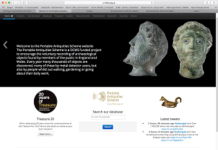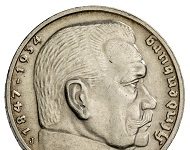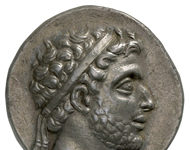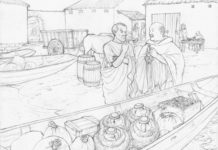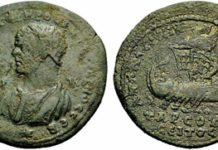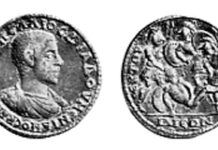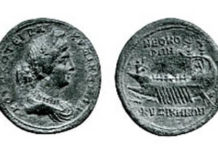Ursula Kampmann
20 Years of Portable Antiquities Scheme
When it comes to describing a successful collaboration of archaeologists, numismatists, detectorists, coin collectors, and coin dealers, the British Museum’s Portable Antiquities Scheme is sure to be mentioned. We will tell you exactly what it is, on what legal grounds it is based, and the successes this program has achieved.
Medieval Sicily Part 1: The Byzantines
Since ancient times, Sicily has been a cultural melting pot, a junction of Africa and Europe, of West and East. The Byzantines even temporarily moved their capital there.
Human faces, part 49: Hindenburg
Why was the human head the motif on coins for centuries, no, for millennia? And why did that change in the last 200 years? This episode looks at the late years of a famous military leader: Paul von Hindenburg.
Human Faces Part 9: The Battle of Macedonia against Rome
Why is it that for centuries – or rather thousands of years – the head has served as the motif for the side of a coin? And why has this changed in the last 200 years? This chapter of the series ‘Human Faces’ looks at the battle between Macedonia and Rome.
The People of Zurich and Their Money 2: The Customs Station of Turicum
Our series takes you along for the ride as we explore the Zurich of times past. This time, you’ll get a chance to read about two men chatting with one another at the customs station of Turicum at the end of the 2nd century AD. Much like a good DVD, this conversation comes with a sort of ‘making of’ – a little numismatic-historical backdrop to help underscore and illustrate this conversation.
The People of Zurich and their Money 1: The Celts’ First Contact with Greek Money
Our series ‘The People of Zurich and their Money’ takes you along for the ride as we explore the Zurich of times past. In this first chapter, we’ll be eavesdropping on a conversation from the 3rd century BC between a Celtic farmer and his wife. Much like a good DVD, this conversation comes with a sort of ‘making of’ – a little numismatic-historical backdrop to help underscore and illustrate this conversation.
The Siege of Strasbourg
During the 16th century, cathedral chapters were fiercely contested between the Catholics and Protestants. The 1592 bishop election of Strasbourg illustrates this sectarian conflict especially well by reference to several siege klippes.
Bread for Tarsus
In the 3th cent., Asia Minor was famine-stricken. The city of Tarsus scored a coup that made the emperor leave the grain necessary for survival to it at a cheap rate. A coin tells of how that was achieved.
“Sing, Muse, of the rage of Peleus’ son Achilles…”
You believe that Paris abducted Helena? Which was why the Greek destroyed Troy? What if it was completely different? The later Trojans in Roman Imperial Times adhered to an entirely different version of the story – and so they celebrated their hero Hector on their coins.
Shipping and superstition in antiquity
Sailors faced many dangers. But the superstitious people found a way to deal with that, and many deities and animals assisted the humans on the sea. A coin from Kyzikos tells of all this, a coin minted on the visit of Emperor Marcus Aurelius.



